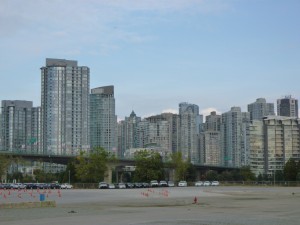Singapore West
Most cities have a vertical business district surrounded by lower residential neighborhoods. Not Vancouver, British Columbia, which has relatively few office buildings but scores of densely packed, extremely slim high-rise apartments. It creates the appearance of an Asian city, not North American at all. In part, this is because so many of the apartment dwellers—or at least owners—are from Hong Kong and mainland China, and are accustomed to vertical living. (It has been estimated that as many as sixty percent of new apartments are owned by non-resident investors.) Windows look out at each other, twenty feet apart.

